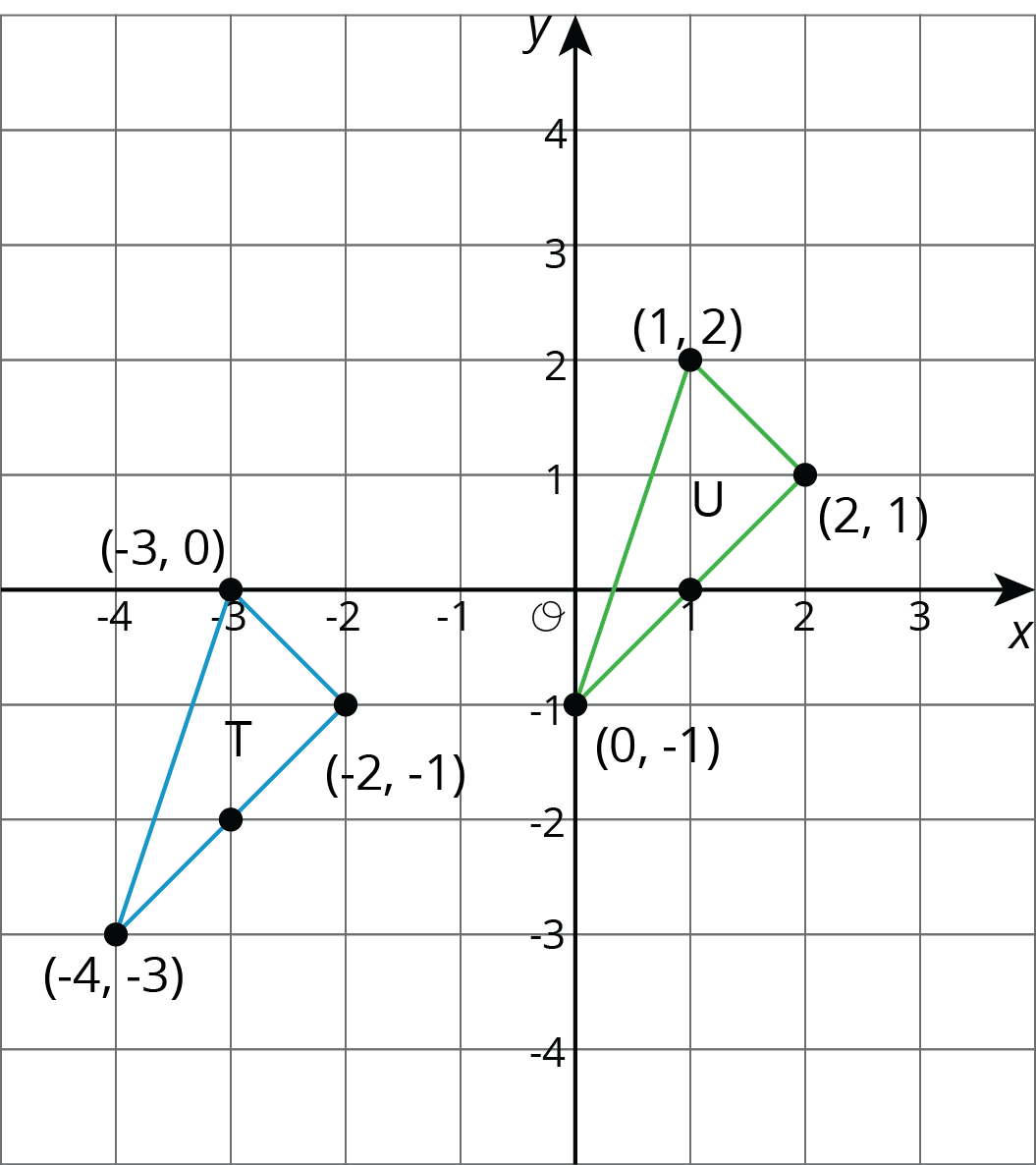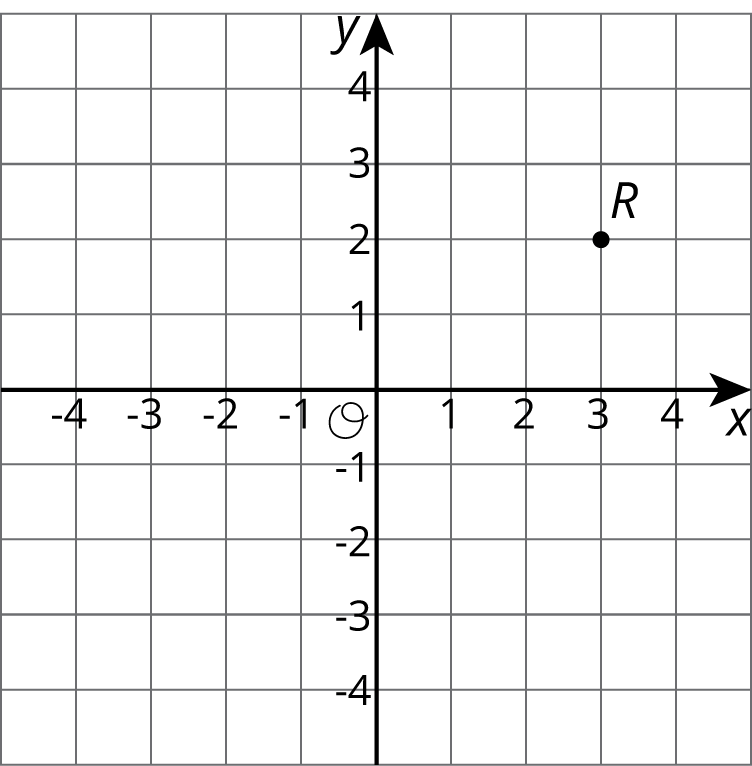We can use coordinates to describe points and find patterns in the coordinates of transformed points.
We can describe a translation by expressing it as a sequence of horizontal and vertical translations. For example, segment AB is translated right 3 and down 2.
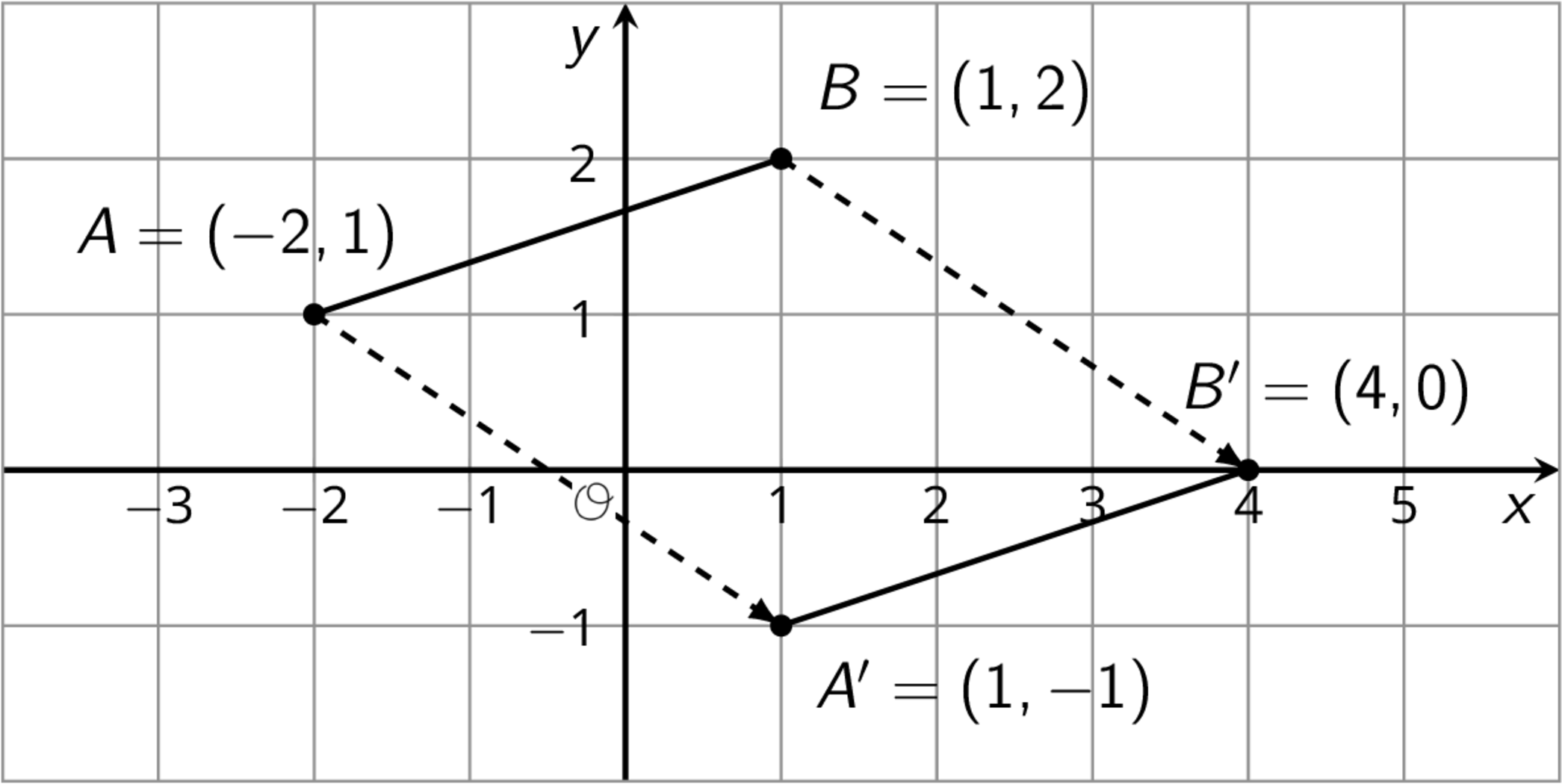
Reflecting a point across an axis changes the sign of one coordinate. For example, reflecting the point A whose coordinates are (2,\text-1) across the x-axis changes the sign of the y-coordinate, making its image the point A’ whose coordinates are (2,1). Reflecting the point A across the y-axis changes the sign of the x-coordinate, making the image the point A’’ whose coordinates are (\text-2,\text-1).
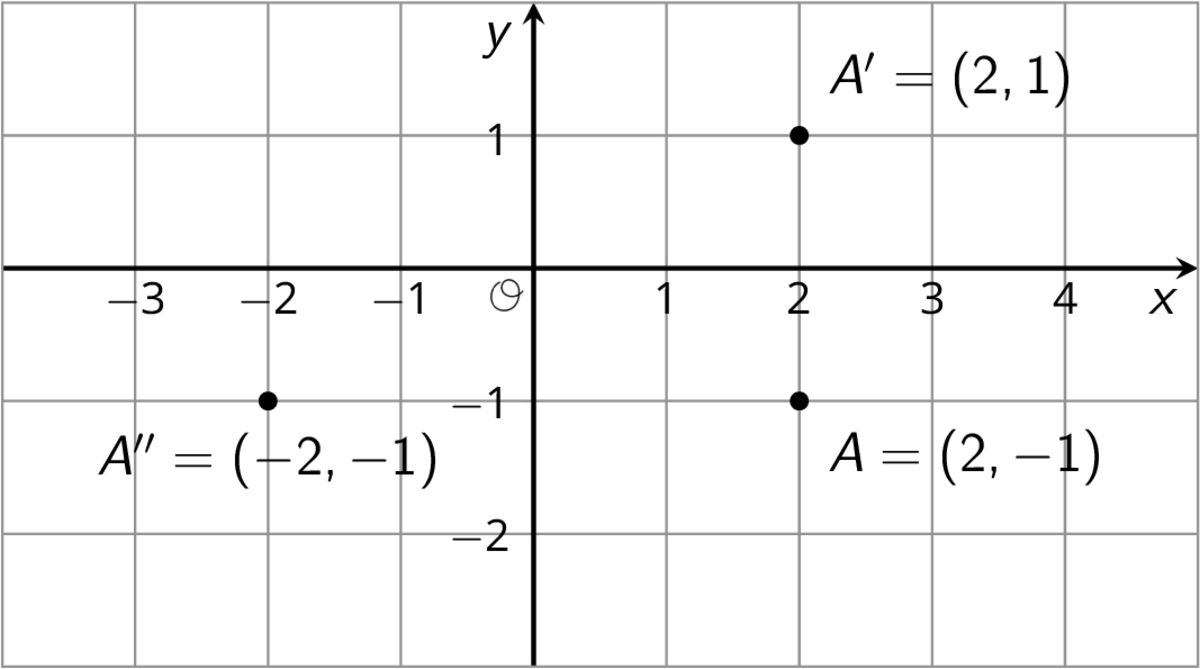
Reflections across other lines are more complex to describe.
We don’t have the tools yet to describe rotations in terms of coordinates in general. Here is an example of a 90^\circ rotation with center (0,0) in a counterclockwise direction.
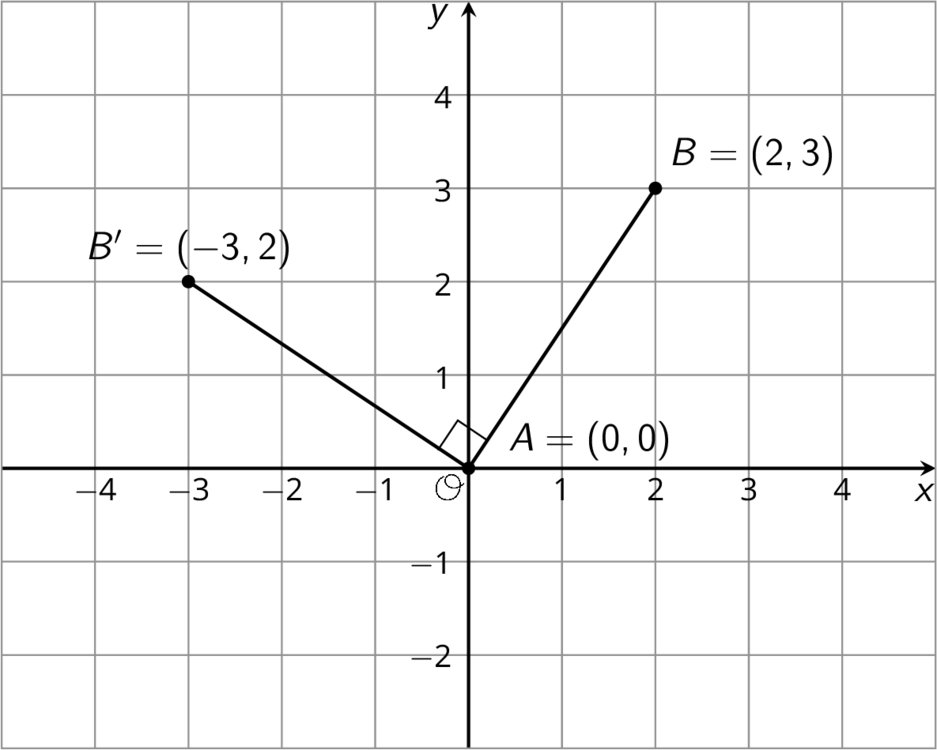
Point A has coordinates (0,0). Segment AB was rotated 90^\circ counterclockwise around A. Point B with coordinates (2,3) rotates to point B’ whose coordinates are (\text-3,2).
